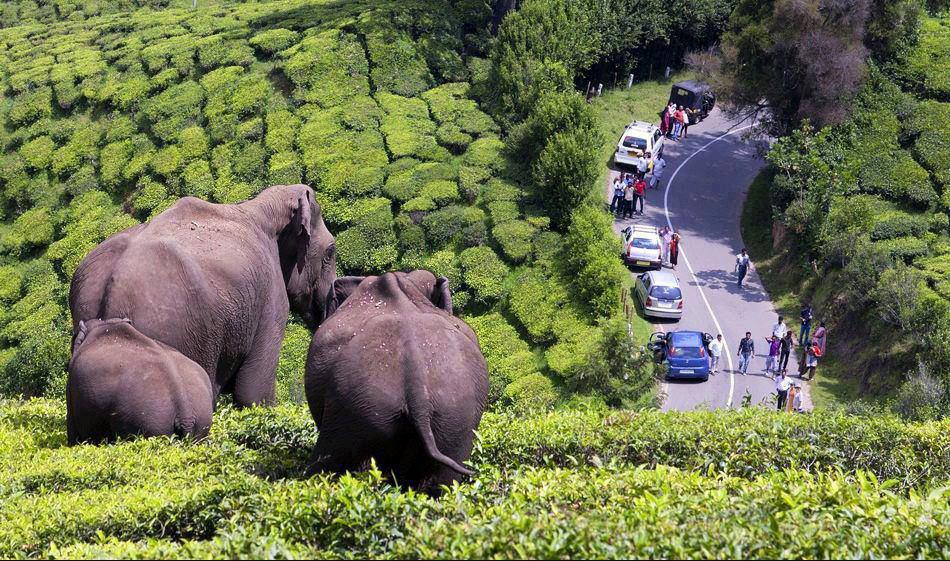| Home | Tours | Destination | | Kerala | | Munnar |
Kerala - Munnar

Munnar is a hill station lying at over 6000 ft height above sea level. The unending stretch of tea & coffee plantations, gushing streams and cascading waterfalls make spectacular watch for tourists .The forests and grasslands in Munnar are home to a vast number of plant and animal species. Perched 1600 km above sea level, Munnar was once a hostile, animal-infested forest terrain. Opened up and developed by British pioneer planters, Munnar has emerged as one of the finest hill stations in India. It was once the South Indian summer resort of the British Government. Munnar is the meeting place of three mountain streams, namely, Mudrapuzha, Nallathanni and Kundala, hence the name ‘Munnar’ - meaning ‘three rivers’.

OTHER PLACE TO SEE
Pothanmedu
Pothanmedu is a scenic spot offering majestic views of the tea, coffee and cardamom plantations in Munnar. The undulating hills, the lush mountain and the incredible scenery here is ideal for trekking and extensive mountain walks. Pothanmedu View is a very comely place, extremely scenic and extremely pleasing to eyes. Inhabited by tea estate workers, Pothanmedu View is a small village some km away in Idukki. At a high point of Munnar, from where the town of Munnar seem to a toy, Pothanmedu provides a bird`s eye view of the entire Munnar and adjoining areas to the town. Pothanmedu is quiet famous with trekkers and adventure junkies. Pothanmedu is catapulted to fame for its lush and green cardamom and tea plantations through which the trekkers make their way. It is an excellent place for a revamping oneself and taking nature walk in to the mountains. Sights of green
Poopara
Poopara is a traveller's spot in Idukki, which is less affected by changing seasons. Sceneries, cool climate and large areas of protected forest with cardamom plantations are sure to attract any city-dwelling traveler.Seasonal change is a factor to be reckoned before setting out on a journey to enjoy and learn nature's creative moods. A waterfall never remains the same when one visits it after a few months of his previous visit. Though we do not normally experience the four seasons in their full strength, variations in climatic conditions make on all life forms. A dense forest turn thin during summer, taking away much of its greenery.A view from Bodymettu, near here, to the plains bordering Tamil Nadu, is clear. Fast spreading fogs that affect vision are a rare phenomenon, thanks to the presence of large rocky barren grasslands on the north-eastern side. During December and January for appears, but not to any great extent.Going on a visit to Poopara during summer is a real pleasure.
Devikulam
Devikulam is an idyllic hill station and the most sought-after among the tourist attractions of Munnar featuring sprawling lawns, exotic flora and fauna and the cold mountain air. The most famous spot of Devikulam is the
Mattupetty Indo Swiss Project
Indo-Swiss Project site in Mattupetty is a Cattle and Research Centre set in Munnar established by Government of India in collaboration with
Attukal Waterfalls
Attukal Waterfalls offer uninterrupted panoramic view of waterfalls and verdant hills and is located between Munnar and Pallivasal. This place is an ideal choice if you plan to go for long trekks.
Top Station
Top station is located amidst scenic surroundings on the border of Kerala (Idukki) and Tamil Nadu (Theni), at an elevation of 1,700 mts. Top Station was a transshipment point for delivery of tea from Munnar to Bodinayakkanur. Top Station derived its name from its being the uppermost located railway station on the Kundala Valley Railway, built in 1902 between Munnar, Kundalai and this hilltop location. A monorail goods carriage system was soon installed along this cart route. In 1908 the monorail was replaced by a 24 inch gauge railway. Middle Station (Kundalai) is 12 kilometers west from Top Station on the way from Lower Station Munnar.Some remains of Kundala Valley Railway can be seen at the Munnar Tea Museum.Tea chests arriving at Top Station from the
Marayoor
Marayoor terrain is specked with wave like mountains, rain and deciduous forests, riverbank forests, paddy fields, waterfalls, rugged rocky hills, shoals, hamlets, brooks and hamlets and so on and so forth. Marayoor, meaning ``hidden land`` has its roots in Tamil and Malayalam language. According to the legend, Marayoor is supposed to be the same place where Pandavas stationed for short span during their exile. The Pandavas used Marayoor as a hidden closet to remain away from the comforts of their palace and Kingdom. Many historians date the account to Stone Age and period near, according to the dolmen and paintings found in the area.
Other Places to See
Related Links
|



